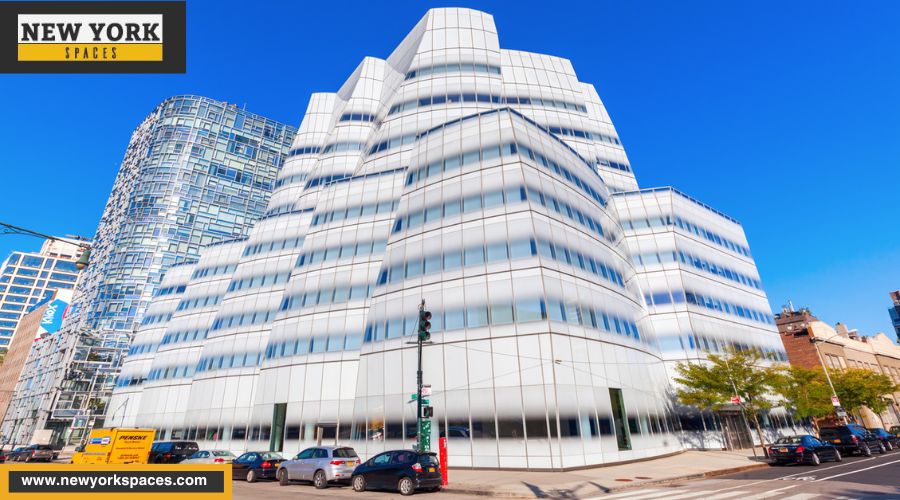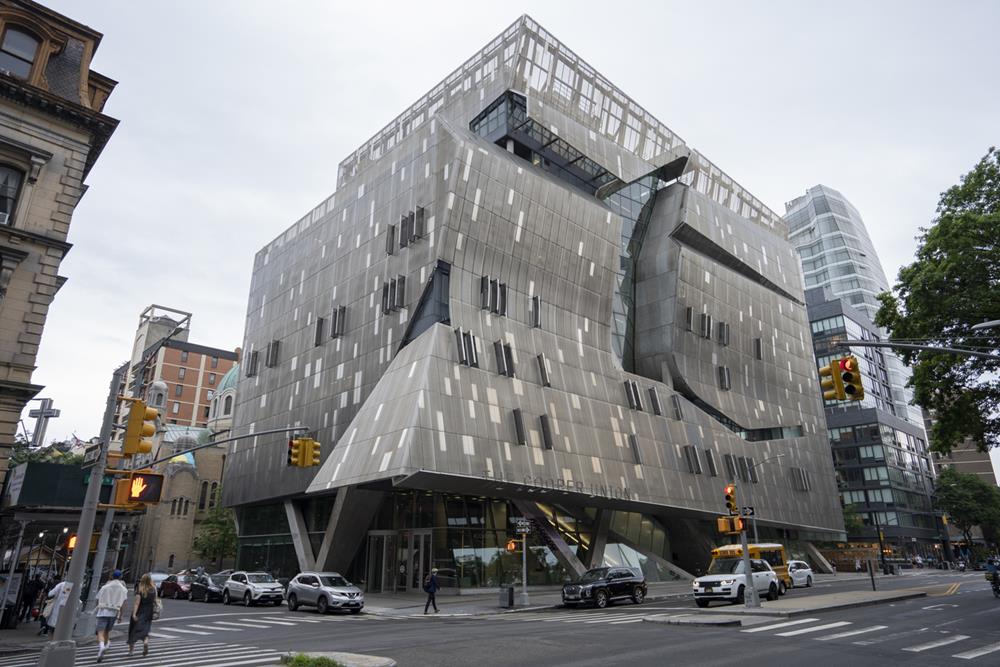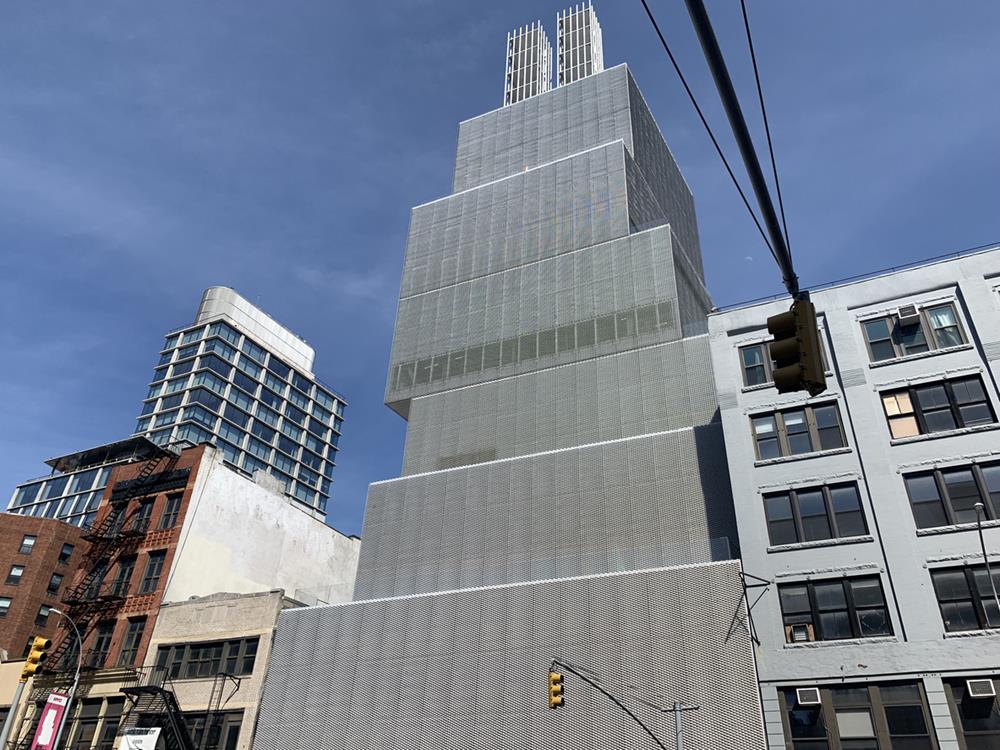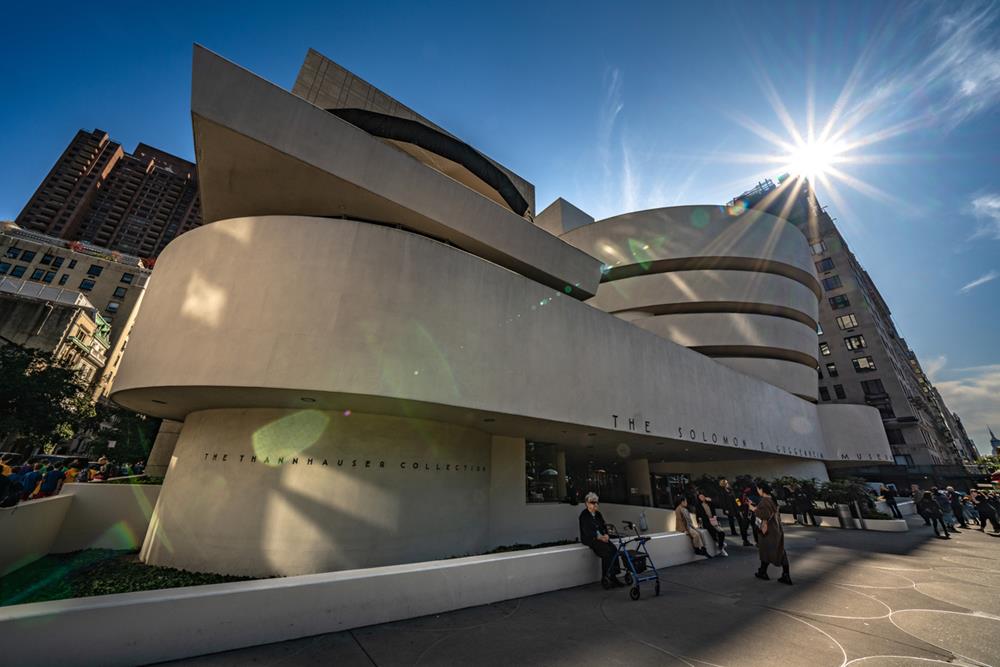New York City, an ever-evolving tapestry of architectural wonders, offers a fascinating journey through various styles that have shaped its iconic skyline. Among these, Deconstructivism architecture stands out for its bold defiance of conventional forms, inviting onlookers to delve into a realm where structures defy gravity and logic, creating a captivating visual dialogue.
The Roots of Rebellion – The Emergence and Essence of Deconstructivism
Definition and Characteristics of Deconstructivist Architecture
Deconstructivism is an architectural movement that emerged as a radical departure from conventional design principles, characterized by fragmentation, non-linear processes, and a visual complexity that subverts traditional architectural aesthetics. This movement challenges the idea of harmony and unity in architecture, opting instead for designs that evoke a sense of controlled chaos and unpredictability. Key characteristics include:
- Fragmentation: In Deconstructivist architecture, fragmentation is a key principle where buildings present themselves as a collection of disparate elements, seemingly disassembled and reconfigured in an unconventional manner. This approach challenges the traditional idea of architectural unity, where all parts of a structure work together in harmony. Instead, fragmentation in Deconstructivism creates a visual complexity that can evoke feelings of dynamism and unpredictability. Buildings that embody this principle might look as if they have been broken apart and then pieced back together in a random, yet controlled fashion, leading observers to question the relationship between the different parts of the structure.
- Dynamic Forms: Deconstructivist structures are renowned for their dynamic forms, which are often realized through the use of sweeping curves, sharp angles, and irregular shapes. This design choice imbues the buildings with a sense of movement and fluidity, as if they are in a constant state of flux. The dynamic forms challenge the static nature of traditional architecture, suggesting that buildings can convey motion and emotion. These forms not only create striking visual silhouettes against the urban skyline but also engage viewers in a visual dance, as the shapes seem to change when viewed from different angles and distances.
- Surface Manipulation: Surface manipulation in Deconstructivist architecture involves treating the exteriors of buildings in unconventional ways to enhance visual interest and dissonance. This can include the use of non-traditional materials, innovative construction techniques, and the incorporation of varied textures and patterns. The result is a rich tapestry of surfaces that catch light and shadow uniquely, contributing to the overall sense of complexity and depth. This manipulation of surfaces can make buildings appear to shimmer, dissolve, or emerge from the urban landscape, depending on the viewer’s perspective and the changing environmental conditions.
- Spatial Disorientation: Deconstructivism often plays with the concept of spatial disorientation within its internal spaces. Traditional architectural logic, with its reliance on symmetry, balance, and predictable progressions, is set aside in favor of slanted walls, irregular openings, and unexpected transitions. This can create a sense of disorientation for the occupant, challenging their spatial perceptions and encouraging a more exploratory and interactive experience with the building. The use of such non-conventional spatial arrangements serves to stimulate the senses and provoke thought, turning the act of moving through a Deconstructivist space into an immersive journey that defies expectations.
Emergence of Deconstructivism in the Late 20th Century
Deconstructivism’s roots can be traced back to the late 20th century, drawing philosophical underpinnings from post-structuralist theory, particularly the works of Jacques Derrida. The “Deconstructivist Architecture” exhibition at the Museum of Modern Art in New York City in 1988, curated by Philip Johnson and Mark Wigley, played a crucial role in bringing the movement to the forefront. This seminal exhibition highlighted a departure from the rationalist principles of modernism, showcasing instead works that embraced fragmentation and dynamic forms.
Influential Architects and Their Contributions to the Movement
Several architects have been pivotal in shaping Deconstructivism, each bringing their unique vision and interpretation to the movement:
- Frank Gehry: Gehry’s designs, such as the Guggenheim Museum in Bilbao, Spain, epitomize Deconstructivism through their dynamic, sculptural forms and innovative use of materials. Gehry’s work demonstrates how architecture can transcend traditional boundaries to become a form of functional sculpture. His work embodies a fusion of art and functionality, suggesting that buildings can serve as both habitable spaces and immersive sculptural experiences.
- Zaha Hadid: Known for her fluid, futuristic designs, Hadid’s contributions to Deconstructivism include the Vitra Fire Station in Germany and the Phaeno Science Center. Her work is characterized by sweeping lines and forms that seem to defy gravity, creating spaces that are both functional and visually compelling. Through her visionary use of form, space, and technology, Hadid created environments that are not just spaces to be occupied but experiences to be lived.
- Peter Eisenman: Eisenman’s theoretical approach to architecture is evident in projects like the Wexner Center for the Arts, where he employs grid distortion and fragmentation to challenge conventional architectural narratives. This theoretical approach makes Eisenman’s work a critical inquiry into the nature of architecture itself, pushing the boundaries of what buildings can represent and how they can function.
- Daniel Libeskind: Libeskind’s Jewish Museum in Berlin is a prime example of Deconstructivism, with its zigzagging form and intersecting voids that carry deep historical and cultural significance, reflecting the museum’s thematic content through architectural form. Libeskind’s approach to Deconstructivism goes beyond mere form, using architectural elements to evoke emotion and convey complex narratives, thereby expanding the language of architecture to include storytelling and historical reflection.
- Rem Koolhaas: Koolhaas, through projects like the CCTV Headquarters in Beijing, explores the potential of irregular forms and unconventional spatial organization to reflect the complex functions and narratives of contemporary society. Through his innovative approach, Koolhaas contributes to a dynamic and reflective urban landscape, pushing the discourse of Deconstructivism into new realms of social and cultural relevance.
These architects, among others, have expanded the possibilities of architectural design, using Deconstructivism not just as a style but as a means to explore new ideas about space, form, and the role of architecture in society. Their contributions have cemented Deconstructivism’s place in the history of architecture, challenging and expanding the boundaries of the field.
Deconstructivist Landmarks in New York City
New York City, a canvas for architectural experimentation, boasts several landmarks that epitomize the Deconstructivist movement. These structures not only redefine the city’s skyline but also challenge conventional notions of form and function.
The IAC Building by Frank Gehry
The IAC Building, located in the Chelsea neighborhood of Manhattan, is one of Frank Gehry’s most celebrated works in New York City. Completed in 2007, it serves as the headquarters for the InterActiveCorp. The building is a testament to Gehry’s ability to transform traditional materials into something that appears almost ethereal. Its billowing glass facade, reminiscent of a sail caught in the wind, creates a dynamic play of light and shadow, changing perceptions with the time of day and weather conditions. The IAC Building stands as a beacon of innovation, its form fluid and ever-changing, mirroring the digital realm of the company it houses.
Cooper Union’s New Academic Building by Thom Mayne
Thom Mayne’s design for the Cooper Union’s New Academic Building, known as 41 Cooper Square, represents a leap forward in educational architecture. Completed in 2009, this building in the East Village breaks away from traditional academic structures, offering an open, interconnected environment that encourages collaboration and creativity among students and faculty. Its facade, a striking mesh of irregular, perforated panels, not only contributes to the building’s distinctive aesthetic but also plays a functional role in regulating light and temperature. Inside, the building is organized around a central atrium, promoting visual connectivity across different levels and fostering a sense of community within the academic setting.
Other Notable Mentions
While the IAC Building and Cooper Union’s New Academic Building are standout examples, New York City’s engagement with Deconstructivism extends to other notable structures, each contributing in unique ways to the architectural dialogue:
- The New Museum of Contemporary Art: Designed by SANAA, the New Museum in the Bowery presents a minimalist take on Deconstructivism. Its stack of shifting boxes challenges traditional museum architecture, creating dynamic exhibition spaces within.
- The Guggenheim Museum Expansion (Proposed Design by Frank Gehry): Although never realized, Gehry’s design for the Guggenheim’s expansion in New York City is a prime example of deconstructivist architecture. The design featured Gehry’s signature style of warped and curvilinear forms that challenge traditional museum architecture and invite a new way of experiencing art.
- Barclays Center: The sports and entertainment arena in Brooklyn, designed by SHoP Architects, features a distinctive, undulating facade composed of weathered steel panels. Its form, evoking movement and energy, encapsulates the dynamic nature of the events it hosts.
These Deconstructivist landmarks in New York City illustrate the movement’s diverse expressions, from Gehry’s sculptural elegance to Mayne’s futuristic vision. Each building, with its unique approach to form and space, contributes to the ongoing architectural conversation, reflecting the city’s openness to experimentation and its embrace of the new and the unconventional. Through their presence, these structures invite residents and visitors alike to reconsider the possibilities of architectural design in shaping human experiences and urban environments.
The Philosophy Behind the Rebellion
The philosophy behind Deconstructivism is deeply rooted in the intellectual tradition of questioning and dismantling established structures and ideas, drawing inspiration from philosophical deconstruction, notably influenced by Jacques Derrida. This architectural movement transcends mere aesthetic rebellion, delving into the essence of how buildings are conceived, experienced, and interpreted. By challenging the conventional boundaries of form, function, and beauty, Deconstructivist buildings invite a reevaluation of architectural norms, encouraging a dialogue that extends beyond the physical structure to encompass broader existential and cultural inquiries. This philosophical approach not only redefines the relationship between space and user but also reflects a deeper interrogation of reality, perception, and the very nature of construction and creativity in the built environment.
The Impact of Deconstructivism on New York City
Deconstructivist architecture, with its avant-garde approach, has significantly influenced New York City’s architectural narrative, intertwining with the city’s vibrant cultural fabric and technological advancements. The introduction of Deconstructivist structures to the city’s skyline has not only added architectural landmarks but also deepened the dialogue between architecture and the diverse elements that constitute urban life in New York.
Challenging Conventional Perceptions
Deconstructivist buildings in New York City serve as a catalyst for a reevaluation of traditional architectural principles. By distorting forms and eschewing symmetry, these structures compel both residents and visitors to question their preconceived notions of what buildings should look like and how they should function. This architectural rebellion against the norm encourages a broader acceptance and appreciation of innovation in design, nudging the public towards a more open-minded engagement with their built environment.
Reflecting Urban Complexity
The intricate forms and unconventional aesthetics of Deconstructivist architecture mirror the complex, multifaceted nature of New York City itself. Just as the city embodies a mosaic of cultures, ideas, and histories, Deconstructivist buildings encapsulate the essence of diversity and dynamism. They stand as physical manifestations of the city’s ever-changing narrative, embodying the flux and flow of urban life. In this way, Deconstructivist architecture contributes to the ongoing conversation about how cities evolve and how their inhabitants interact with the ever-shifting landscapes.
Influencing Urban Development and Design
Deconstructivist architecture has also played a role in shaping urban development and design philosophies in New York City. By breaking away from conventional forms, these buildings encourage developers, city planners, and other architects to consider more innovative and adaptive approaches to urban design. This has led to a more diverse architectural landscape, where experimental designs coexist with traditional structures, enriching the city’s visual and spatial experience.
Fostering Interdisciplinary Collaborations
The complexity and innovation inherent in Deconstructivist architecture often necessitate collaboration across various disciplines, including engineering, technology, and the arts. This interdisciplinary approach not only pushes the boundaries of what is architecturally possible but also fosters a culture of collaboration that can extend beyond the realm of architecture. As a result, Deconstructivist buildings in New York City are not just structures but hubs of innovation, where different fields converge to explore new possibilities.
Deconstructivism in the Public Eye
- The Role of Deconstructivist Architecture in Popular Culture and Media: Deconstructivist architecture, with its visually striking and unconventional forms, has made a significant impact on popular culture and media, often serving as a symbol of modernity and innovation. In movies, television shows, and advertisements, Deconstructivist buildings are frequently used as backdrops that convey a sense of futurism and avant-garde aesthetics. These structures have also become subjects of interest in art and photography, where their dynamic forms and complex geometries offer endless possibilities for exploration and interpretation. This presence in various media forms has helped to embed Deconstructivist architecture within the cultural consciousness, making it a recognizable and influential force in shaping contemporary aesthetic sensibilities.
- Public Perception and Engagement with Deconstructivist Spaces in NYC: In New York City, public engagement with Deconstructivist spaces reveals a spectrum of reactions, from awe and admiration to confusion and critique. These buildings often become focal points for discussions about the role of architecture in public spaces, the balance between form and function, and the future direction of urban development. For many, Deconstructivist buildings are celebrated as bold statements of artistic expression and architectural innovation, admired for their ability to break free from traditional constraints. However, for others, their unconventional appearance and perceived prioritization of form over function can be polarizing. Despite these varied reactions, Deconstructivist spaces undeniably stimulate public discourse and encourage people to interact with their environment in new and meaningful ways, fostering a deeper appreciation for architectural diversity and creativity.
Navigating the Next Wave of Deconstructivism in New York
Potential Future Developments in Deconstructivist Architecture in NYC
As New York City continues to evolve, the potential for future developments in Deconstructivist architecture remains vast and vibrant. The city’s ever-changing skyline is ripe for the introduction of new Deconstructivist projects that push the envelope in terms of design, sustainability, and integration with urban fabric. Upcoming developments may focus more on how Deconstructivist principles can be applied to address urban challenges, such as housing, public spaces, and environmental sustainability. This could lead to innovative solutions that combine the movement’s hallmark aesthetic dynamism with practical considerations for the future of urban living, making Deconstructivism a key player in shaping the next generation of New York’s architectural identity.
Emerging Architects and Projects to Watch
The future of Deconstructivism in New York City will be driven by a new generation of architects who bring fresh perspectives and innovative approaches to the movement. Emerging talents are likely to experiment with new materials, technologies, and design methodologies, potentially blending Deconstructivist principles with other emerging trends like parametric design and digital fabrication. Keep an eye out for up-and-coming firms and young architects participating in design competitions, exhibitions, and public projects, as these platforms often reveal the cutting-edge of architectural thought and the potential future stars of the Deconstructivist scene.
The Lasting Influence of Deconstructivism on the Architectural Landscape
Deconstructivism’s lasting influence on New York City’s architectural landscape extends beyond its physical manifestations. The movement has contributed to a broader shift in how architecture is conceptualized, challenging architects to think more critically about the relationship between form, function, and context. As a result, Deconstructivism has enriched the architectural discourse, encouraging a more experimental and interdisciplinary approach to design. This legacy ensures that, regardless of how styles and preferences evolve, the spirit of innovation and critical inquiry championed by Deconstructivism will continue to inspire architects to explore new possibilities and redefine the boundaries of what architecture can be in New York City and beyond.
Conclusion
Deconstructivism architecture in New York City is a testament to the city’s enduring status as a global center of innovation and creativity. By challenging conventional ideas of form and space, deconstructivist buildings invite us to reimagine the possibilities of architecture and the urban environment. As New York City moves forward, the principles of deconstructivism will continue to inspire architects and designers to push the boundaries of what is possible, shaping the city’s skyline for generations to come.





